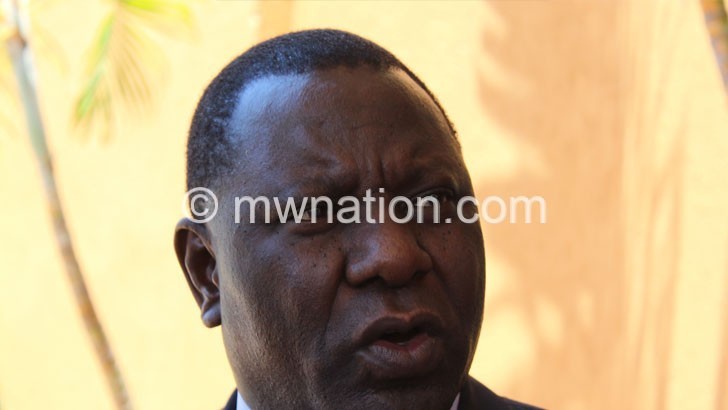Why vision 2020 failed
With barely 40 days to the dawn of 2020, it is now official that Malawi’s first long-term national development plan, Vision 2020, has missed most of its key aspirations.
Findings from a review exercise of the ambitious plan validated yesterday in Lilongwe by the National Planning Commission (NPC) show that despite Malawi making progress in some indicators during the implementation period, the country has failed to meet most of the targets with the performance rated under-par and below the world’s average in some instances.
NPC, which is mandated to develop long and medium-term national development plans for Malawi and also oversees implementation of the same, commissioned the review process of Vision 2020 with funding from United Nations Development Programme (UNDP) Malawi office.

the minimum threshold
The commission engaged Premier Consult Limited to review and analyse the Vision 2020 to identify lessons learnt and make proposals for possible priority areas for the next successor Vision for Malawi.
The findings show that while the Vision 2020 has helped reduce income inequalities, access to education and improving the standards of health sectors, on the flipside, major failures include, below expected growth rates, “extremely low” per capita gross domestic product (GDP) by global standards, low global competitiveness, deterioration of economic infrastructure, decline in industrial production, worsening fiscal stress and poor governance.
Vision 2020 also failed in reducing poverty, with 50.7 percent of the population still living below the poverty line of $1.90 (about K1 406) per day while 25 percent of the population live in extreme poverty.
In fact, Oliver Saasa, proprietor and lead consultant of Premier Consult Limited, did not mince words in his presentation of key findings to stakeholders.
He summarised the implementation era of the document as follows: “The country was doing efficiently in wrong things.”
Below than expected GDP growth rates
Taking stakeholders through major failures of Vision 2020, Saasa said the review found that annual GDP growth rate averaged only 4.39 percent between 1994 and 2018. In 2018 alone, the economy grew by a paltry 3.7 percent, he said.
“An annual GDP growth of around nine percent was needed to sustainably attain the anticipated aspirations of the Vision,” said Saasa, an international development studies expert.
High economic growth rates are essential for creating more jobs, attracting more foreign direct investment, creating high tax revenues, reducing debt to GDP ratio, unleashing high average incomes to consumers and improved public services, among other many benefits.
Malawi Growth and Development Strategies (MGDS) III adopted a minimum average growth in real GDP of six percent annually apparently derived from Millennium Development Goals (MDGs) which targeted to halve world poverty rate by 2015.
Economic infrastructure deterioration
On economic infrastructure, which Vision 2020 envisioned to improve during the period, Saasa observed that based on the findings, there has been some improvements in road infrastructure but lamented that distance to a good road for the average Malawian has not improved.
Nowhere near middle income status
The findings have also exposed Malawi’s inability to achieve a middle income status with a per capita income of $1 000 (about $740 000) per person per year as aspired by Vision 2020.
In fact, many stakeholders at the validation meeting, whom The Nation spoke to, described the target as “too ambitious” by those who were tasked with the responsibility of crafting the blue-print.
According to current international thresholds, a lower-middle-income country is defined by its per capita income ranging between $1 006 to $3 975 while an upper-middle-income country has its per capita income in the bracket of $3 976 to $12 275.
A high-income country, on the other hand, has its per capita income lying in the range between $12 276 and above.
On this, Saasa told stakeholders, who included Reserve Bank of Malawi (RBM) Governor Dalitso Kabambe, that with a benchmark per capita income of $228 (about K168 720) in 1996, achieving middle income status required an annual GDP growth rate in excess of at least nine percent, assuming a population growth rate of two percent.
Malawi’s per capita income, which Kabambe himself described as remaining too flat and low, two weeks ago, averaged $372.95 (K276 020) from 1960 to 2018, the findings show.
Currently, Malawi’s annual population growth rate stands at 2.9 percent, a rate many population experts say is weighing down economic growth potential.
The GDP per capita in Malawi is equivalent to only four percent of the world’s average, making the country one of the poorest in the world, according to the findings.
Declining industrial production growth
Contrary to the aspiration of the Vision 2020 to turn Malawi from a consumer into a net exporter, the review has revealed that trade balance during Vision 2020 implementation has deteriorated from $84 million to $1.8 billion.
Good governance remains ‘illusive’
On governance, Saasa said attaining it has over the years been “illusive” as accountability, transparency in use of resources has remained a challenge in Malawi.
He said Malawi has exhibited insufficient fiscal prudence, which has compromised attainment of Vision 2020.
Said Saasa: “Except during 2008 when there was fiscal space created by debt forgiveness in 2006, Malawi has always operated a big deficit budget, averaging 4.2 percent of the budget. Fiscal stress worsened by several Development Partners (DPs) withdrawing aid on account of poor economic governance record.”
Malawi is the 120-least corrupt nation out of 175 countries, according to the 2018 Corruption Perceptions Index which is yearly compiled by Transparency International.
Meagre successes:
Presenting on “what worked”, University of Malawi’s Chancellor College-based professor of economics Winford Masanjala, who is also one of consultants for Premier Consult Limited, said the country during the implementation period saw a reduction of inequality (or promotion of equal opportunities) through Malawi Social Action Fund (Masaf) and the Starter Pack Programme for small-scale farmers.
The review also highlighted improvement in maternal mortality rates which has reduced from 984 maternal deaths per 100 000 live births in 2004 to 807 in 2006; to 675 in 2010, to 574 in 2014, and to 439/100,000 live births in 2016.
Views from the plenary
Commenting on the findings, participants confessed and agreed that Vision 2020 lacked monitoring and tracking system.
Going forward, Kabambe talked tough, saying any responsible public officer must be held accountable in their roles and responsibilities.
From private sector point of view, Malawi Confederation of Chambers of Commerce and Industry (MCCCI) chief executive officer Chancellor Kaferapanjira said the Vision failed to define how to sustain the economy as well as how to generate wealth for the country.
In an interview later, Economics Association of Malawi (Ecama) acting executive director Kettie Nyasulu, who was also among participants, said the review to a larger extent was comprehensive.
Public finance management expert and former Ecama president Paul Kwengwere blamed poor governance as a major constraint to the attainment of aspiration of Vision 2020.
He said poor governance led to weak accountability which he said resulted into abuse of public resources during the period.
For a long time after independence, Malawi’s development plans had been guided by short to medium-term plans, which included 10-year Statement of development policies during the one-party state.





